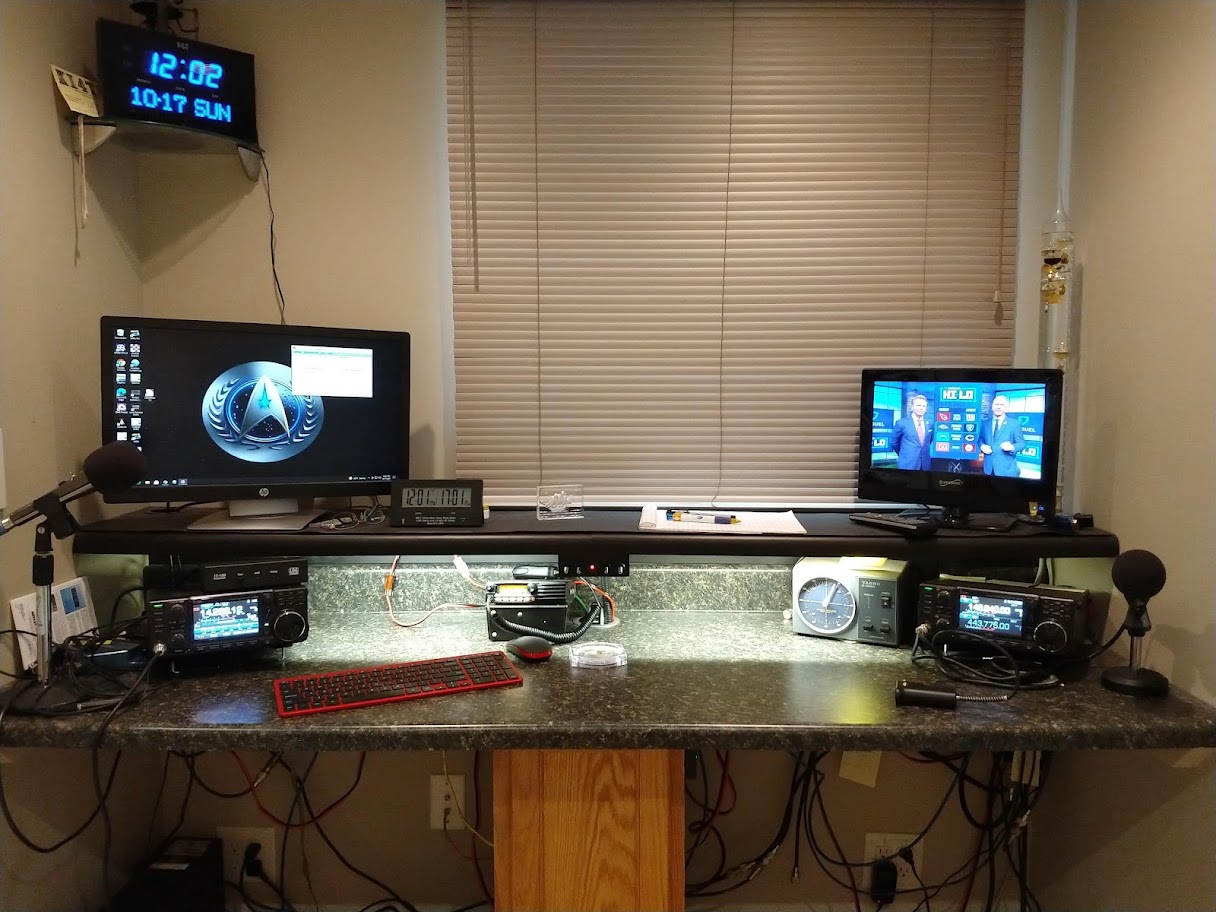 On Saturday November 11, 2017 - members of the Ak-Sar-Ben Amateur Radio Club setup operations on board the USS Hazard to celebrate the day and let all the vets (including the Hazard herself) know that they are appreciated.
On Saturday November 11, 2017 - members of the Ak-Sar-Ben Amateur Radio Club setup operations on board the USS Hazard to celebrate the day and let all the vets (including the Hazard herself) know that they are appreciated.
The ship's oven needs a thermostat repair, so the plan for pizza was scrapped, but crock pots full of chili and bar-b-que chicken were a nice warm subsititute. There was also plenty of coffee to help keep the operators warm.
The KØUSA remote operation team (aka - KØCTU and NØTRK) decided against using the Icom IC-728 that is currently housed in the radio room, and instead opted to use the Icom IC-7000 that was a veteran of National Parks on the Air in 2016. The also decided to try the newest additon to their portable set up, an Bioenno 30aH LiFePo4 battery. They did use the ships long wire antenna for all contacts.
While the chili and chicken were warming in the galley, the radio room was getting warmer as the heaters worked hard to chase away the chill of the steel hull of the ship. Sinse the band condtions have been poor lately, the KØUSA team assumed that the contacts would come slowly and it would be a great time to get new hams and other visitors a chance to get on the air. They were wrong.
KØCTU made a few casual contacts then settled onto 14.251MHz. About 17:21 UTC NY3C said "I spotted you". That phrase means that your callsign, frequency and location are added to the DX Cluster. "The Cluster" is a group of web sites like DXsummit.fi and DXwatch.com that are all interlinked and show a stations callsign, frequency and location. Being spotted usually means and up-tick stations answering your CQ. At least for a while, generally until your call sign ages off as more stations are spotted from around the world. But the while lasted until 21:00 UTC when the radio was shut down as the park was closing.
There were several visitors to the radio room, both newly licensed and experienced operators. And while KØCTU and NØTRK both took turns logging and operating, no one else was willing to brave the cacophny of sound that a pile ups generates and operate for a while. NØTRK assured everyone that she and Pat were not "getting all the callsigns" but would catch a partial call, such as a prefix, number or even just a single letter out of the group of voices. At that point they would just ask for the "K7" or "the station ending in Bravo Romeo". The other stations wait (most of the time) while you work that station. Then it starts over again. Its actually a lot of fun. Remember, that they want to talk to you, and the do understand that taking turns is the only way that happens, and that operator at the station they are calling gets to decide who gets to talk.
KØUSA did not set any records for contacts per hour, but did manage 256 contacts in about four and a half hours. The average was 56 contacts per hour. Both Mary and Pat tried to do more than just exchange signal reports, location and names. Every few contacts they would let everyone know a bit about the USS Hazard. Also many hams would ask questions like:
"Are you using the ship's radios?" No, they are all AM and not yet restored to operating condition. But we are using the ship's antenna which has been restrung.
"Are you really in the radio room of the ship?" Yes, and we are glad for the heaters, its a bit cold inside a steel hulled ship in November in Nebraska.
"How did a mine sweeper get to Omaha?" The Missouri River borders Nebraska and Omaha is right next to the river.




